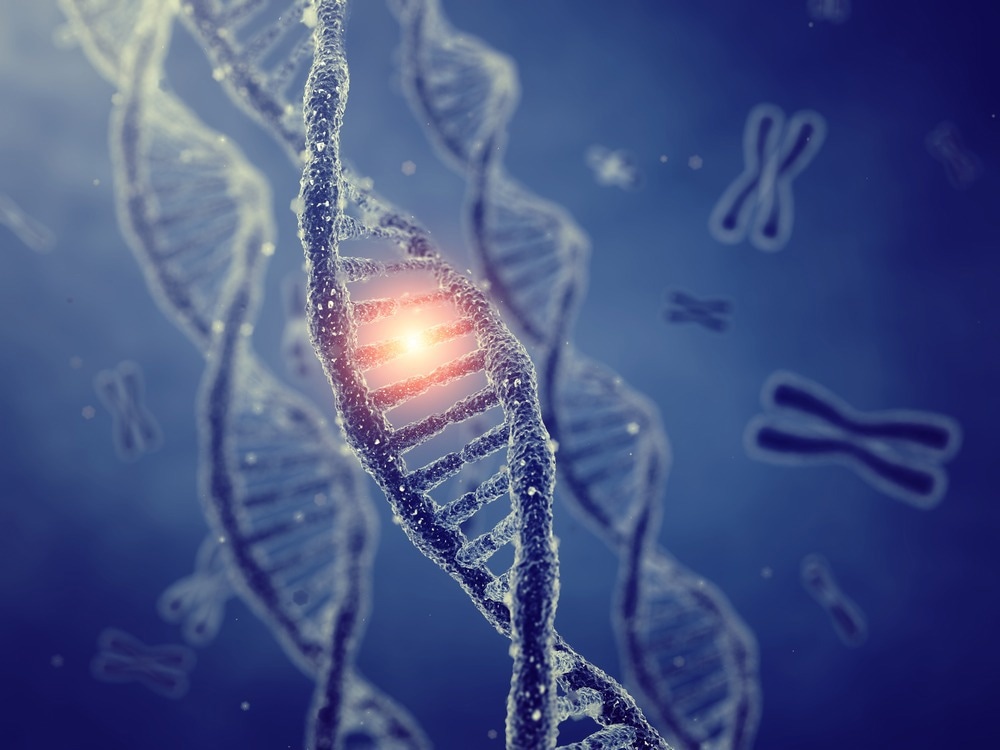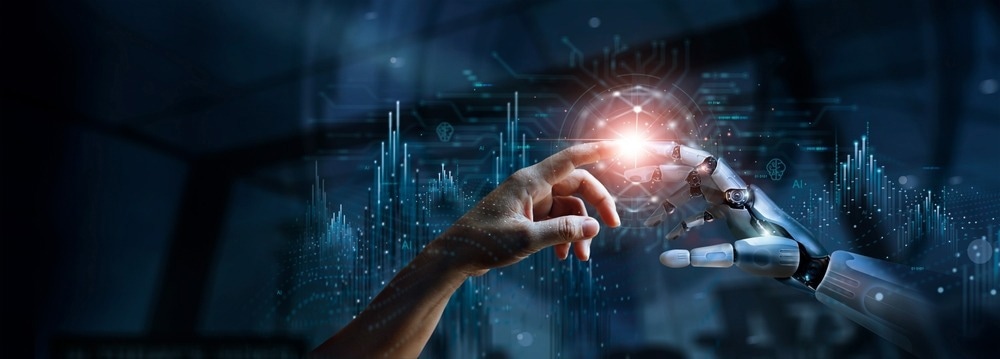Introduction
Understanding genetic mutations
The power of AI in genomics analysis
Applications in healthcare and industry
The future of genetic mutation detection
Conclusion
References
Further reading
Artificial Intelligence (AI) has become a potent tool in identifying genetic mutations. By leveraging AI capabilities, scientists can rapidly and accurately analyze vast amounts of data. This innovative technology facilitates the detection of mutations, leading to personalized medicine and targeted treatments.

Image Credit: nobeastsofierce/Shutterstock.com
Introduction
Genetic mutations play a critical role in healthcare because they can affect an individual's susceptibility to disease and response to treatment. Understanding these mutations is essential for accurate diagnosis and effective treatment.
AI is increasingly being integrated into various medical fields, including genetics. AI algorithms can sift through massive amounts of genetic data, identify patterns, and make predictions with remarkable speed and accuracy. This growing role of AI in healthcare has the potential to revolutionize disease prevention, diagnosis, and treatment, providing new insights and improving patient outcomes.
Understanding genetic mutations
Genetic mutations are alterations in the DNA sequence that can be caused by external factors or can occur naturally. Mutations can be categorized into several types, including point mutations, insertions, deletions, duplications, and inversions.
While mutations in coding regions of the genome often receive considerable attention, it is important to recognize the importance of mutations in non-coding regions. Mutations in these regions can affect the binding of transcription factors and alter the regulation of gene expression. Such mutations may contribute to the development of disease.
The range of genetic disorders caused by mutations is vast. Focusing solely on diseases resulting from mutations in a single gene, there are approximately 10,000 monogenic diseases that are inherited. Some well-known examples of genetic disorders are cystic fibrosis, Huntington's disease, and sickle cell anemia.
In addition, there is a wide variety of polygenic disorders, such as diabetes mellitus, hypertension, schizophrenia, cancer, and common developmental anomalies (e.g., congenital heart defects).
Cancer development typically involves the accumulation of multiple genetic mutations over time and interactions with environmental factors, with only a minority of cancers associated with mutations in a single gene. For example, hereditary breast and ovarian cancers are often associated with mutations in the BRCA1 and BRCA2 genes, or retinoblastoma, which is caused by mutations in the RB1 gene.
Li-Fraumeni syndrome is another interesting disorder caused by mutations in the tumor suppressor gene TP53. Individuals with this syndrome have an increased risk of developing a variety of cancers, including breast, brain, and bone cancers. Conversely, inherited TP53 mutations are very rare, but somatic mutations are common in about half of all cancers.
Understanding the genetic basis of disease is critical to developing targeted therapies, identifying individuals at higher risk, and advancing personalized treatment approaches. The latest and most advanced approach to address these issues is through AI.
The power of AI in genomics analysis
Artificial intelligence plays an important role in genomic analysis. AI algorithms, such as machine learning (ML) and deep learning (DL), are used in genomic analysis to process and interpret large amounts of genetic data. These algorithms can identify patterns, make predictions, and classify genetic variations based on training from large datasets.
AI models can analyze genomic, gene expression, and epigenetic data to identify genetic mutations and their potential effects. It offers several advantages over traditional methods, including improved accuracy, efficient analysis, identification of novel mutations, personalized medicine through integration with clinical data, and biomarker discovery.

Image Credit: PopTika/Shutterstock.com
Applications in healthcare and industry
Single nucleotide mutations can have a significant impact on phenotypes. Genome-wide association studies (GWAS) have identified hundreds of thousands of variants associated with complex pathological phenotypes, most of them in non-coding DNA.
Determining the functional effects of these variants has been a major challenge for GWAS. ML and DL algorithms have emerged as valuable tools to address this challenge. One of the first works in this area was done by Kircher et al. (2014), who developed a computational framework called Combined Annotation Dependent Depletion (CADD) that integrates different annotations to assess the effects of genetic variants in the human genome.
They created a variant-by-annotation matrix containing millions of observed and simulated genetic variants along with their unique annotations. They then trained a support vector machine (SVM) using features derived from the annotations to score all possible single nucleotide variants (SNVs) in the human genome. They also evaluated its ability to prioritize functional and disease-relevant variants within different pathogenic contexts.
In addition, two notable examples of AI solutions for mutation detection are DeepSEA and ExPecto, both of which are based on DL. DeepSEA is a DL method specifically designed to predict the effects of sequence changes on chromatin. It can accurately predict the epigenetic state of a sequence, including factors such as transcription factor binding, DNase I sensitivity, and histone marks in multiple cell types. This capability allows DeepSEA to predict the chromatin effects of sequence variants and prioritize regulatory variants.
ExPecto is another DL-based approach focused on understanding gene regulation. It can accurately predict the tissue-specific transcriptional effects of mutations directly from a DNA sequence. This includes the ability to predict the effects of rare or previously unobserved mutations. It prioritizes causal variants within loci associated with disease or traits using data from publicly available GWAS. Its predictions have been experimentally validated for four immune-related diseases.
The future of genetic mutation detection
AI algorithms have demonstrated the ability to predict accurately the impact of mutations on gene expression and prioritize regulatory variants. Future progress could involve enhancing and extending these models to improve accuracy and usefulness in various genetic contexts, as well as designing new models.
One of the most recent developments is the DEMINING method created by Fu et al. (2023), which directly detects disease-linked genetic mutations from RNA-seq datasets. By utilizing DEMINING to RNA-seq data from acute myeloid leukemia (AML) patients, previously underappreciated mutations were found in unannotated AML-connected gene loci.
Conclusion
AI plays a crucial role in advancing personalized medicine by analyzing genomic data to identify individual-specific disease risks, treatment responses, and optimal therapeutic approaches. AI algorithms integrate diverse omics data types to gain a comprehensive understanding of complex biological processes and uncover disease mechanisms, leading to the identification of therapeutic targets and drug discovery.
Additionally, AI creates precise models for forecasting disease development involving genetics and environmental factors. Overall, AI-based mutational analyses contribute to drug discovery, development, and personalized medicine.
References
- Fu Z, et al. (2023). A Deep Learning Model Embedded Framework to Distinguish DNA and RNA Mutations Directly from RNA-Seq. BioRxiv 2023.10.17.562625. https://doi.org/10.1101/2023.10.17.562625
- Kircher M, et al. (2014). A general framework for estimating the relative pathogenicity of human genetic variants. Nature Genetics, 46(3), 310–315. https://doi.org/10.1038/ng.2892
- Li R, et al. (2021). Machine learning meets OMICS: Applications and perspectives. Briefings in Bioinformatics, 23(1). https://doi.org/10.1093/bib/bbab460
- Zhou J, et al. (2015). Predicting effects of noncoding variants with deep learning–based sequence model. Nature Methods, 12(10), 931–934. https://doi.org/10.1038/nmeth.3547
- Zhou J, et al. (2018). Deep learning sequence-based ab initio prediction of variant effects on expression and disease risk. Nature Genetics, 50(8), 1171–1179. https://doi.org/10.1038/s41588-018-0160-6
- Genetic disorders. Genome.gov. (n.d.). [Online] https://www.genome.gov/For-Patients-and-Families/Genetic-Disorders (Accessed on October 2023)
Further Reading
Last Updated: Nov 8, 2023